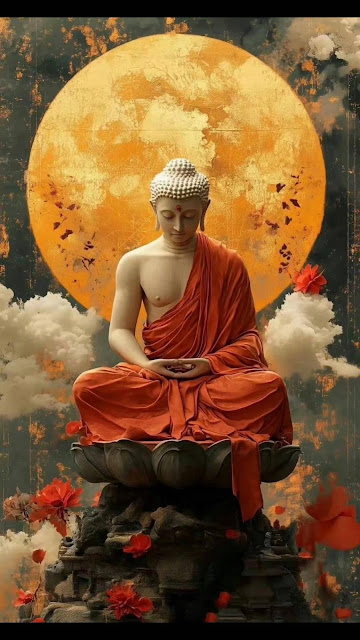Kurukulla is a goddess of enchantment, attraction, and love in Vajrayana Buddhism. She goes by the name Rigjema, or the Mistress of Knowledge, in Tibetan.
As a dakini, Kurukulla embodies the highest wisdom, eradicating ignorance and transforming unpleasant emotions into pure consciousness.
She is associated with the four enlightened practices described in the Buddhist tantras (Tib. le shi): pacifying, enriching, magnetizing, and subduing. She is especially strongly linked to the attractiveness and magnetism of ideal circumstances.
However, in her instance, these deep feelings are thought to be wholly devoted to the well-being of sentient creatures and free of any self-serving intent. Her main goal in offering her sympathy and love without conditions is to end their pain.
She has one face, four arms, and three eyes. Her exquisite, enlightened body is colored the ruby color of passionate, loving kindness.She carries a bow, a floral-tipped arrow, and an enticing hook with grace.I prostrate and honor the victorious one, Kurukulle.Her red color symbolizes her ardor and her bond with love. She is identified with the goddess of love in this capacity. Her most recognizable symbol, the bow and arrow, is reminiscent of the Roman Cupid or the Greek Eros.
These qualities are present in practically every form of Kurukulla and help with the ritual subjection of a specific object as well as the alteration of awareness.
The bow and arrow are employed, on the one hand, to draw in the target and, once inside, pierce it to release a wave of love and passion.
For Goddess of Love Red Tara Kurukulle YouTube video, please visit us : https://youtube.com/shorts/FRcwK4QAJl8?si=A5I_IIeXlX0CYfL5
The practice of Kurukulla helps to achieve numerous secular and spiritual goals. Worldly benefits include attracting love, improving relationships, increasing respect and support from parents and friends, subjugating demonic powers, healing, accumulating wealth, finding work, and gaining approval.
What is the power of Kurukulla?Kurukulla is a powerful, semi-wrathful female deity belonging to the Lotus family. She is a feminine embodiment of enlightened wisdom and is a dakini skilled in magnetizing everything required by the practitioner. Her magnetizing and increasing power attracts wisdom, happiness, health, wealth, and long life.
Is Kurukulle an enlightened dakini?Kurukulla is an enlightened dakini. Who embodies the most incredible wisdom that vanquishes ignorance and converts negative emotions into pure consciousness.
She is related to the four tantric Buddhist enlightened activities of tranquility, enrichment, attraction, and subjection. She is also the goddess of magic and miracles. She is also the goddess who always surprises the worshiper with her prowess.
Donations for our Buddhist research and development.Do you earnestly cherish our devoted work? Assuming this is the case, we are delighted that you are finding our blog useful and valuable. Would you consider making a donation for our Buddhist research and development?
We need your help to secure the future of scholarly interaction with Buddhism. Since our very first publication of Dharma works and activities in 2008, we have been effortlessly providing free distribution of Dharma posts and articles throughout the previous 16 years.
We have exceptionally constrained support and do not receive subsidies or funding from people in general.
Please help us develop our Dharma activities that will not only benefit you but all Dharma readers on the planet. Please consider showing your support. Your generosity will certainly help us enhance our work and accomplish more for a better and brighter future.
Thank you for reading. May you find peace and great bliss. With your support, it helps to spread the Buddha’s precious teachings and turn the Dharma wheels in the world.
For those in whom the precious lBodhichitta has not arisenMay it arise and not decrease.But increase further and further.
Dedication of Merit
By this merit, may we then obtain omniscience then.
Having defeated the enemies wrongdoing. May we liberate migratory from the ocean of existence.With its stormy waves of birth, old age, sickness, and death.
*Note.
I do not own or infringe any copyright on the picture(s).
Picture(s) courtesy and credit to the rightful distributors and/or studios
The picture(s) are intended for editorial use only.


















































